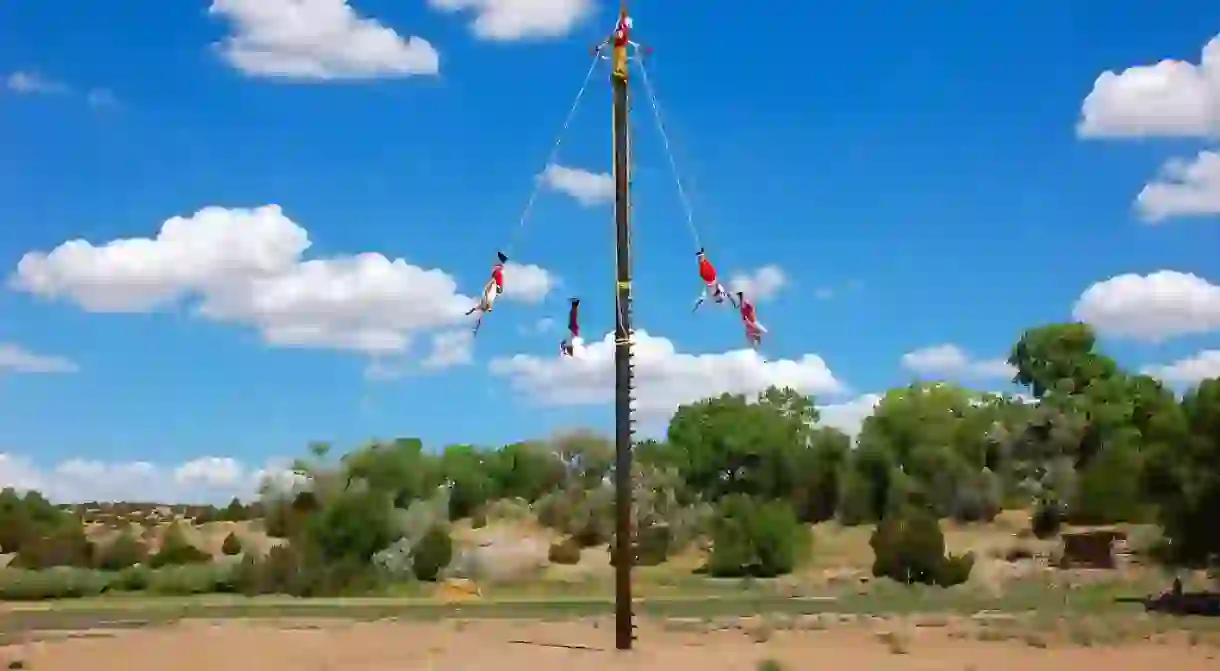Everything You Need to Know About the Danza de los Voladores

Modern day Mexico is home to an ancient and spectacular ceremony that still succeeds in astonishing its lucky witnesses. It’s known by various names, including the Danza de los Voladores and the Voladores de Papantla. Here’s everything you need to know about this magnificent Mesoamerican marvel.
Origins
The Danza de los Voladores is a ceremony with deep spiritual and ritual significance originating from the Mexican state of Veracruz. The tradition ultimately spread across Mexico and down as far as Nicaragua. While it is now most closely associated with the Totonac peoples of Veracruz, in particular in Papantla, (hence once of its names), this intriguing danza was likely the invention of the Nahua, Huastecs, and Otomi.

The original significance of the Danza de los Voladores was, like many other Mesoamerican rituals, connected with fertility, corn, and the harvest. According to Totonac myth, the Danza de los Voladores originated as a way to appease the gods and end severe drought. This theory perhaps explains why the ritual is most closely associated with rain and solar gods such as Tlazotlteotl, Xipe and Totec, as well as notable solar events such as the Spring Equinox.
The Danza de los Voladores has been significantly revived in recent years (albeit mainly for commercial purposes) and nowadays, it’s so important to the cultural heritage of Mexico that it was recognised by UNESCO in 2009.

What is the Danza de los Voladores?
As anyone who’s seen the ritual will know, it makes for an unforgettable experience. Typically, five men dressed in striking red and white outfits—bedecked with mirrored elements and rainbow headdresses representing the sun and rainbows, respectively—shimmy up a 30-metre high pole, before four of them proceed to tie themselves to the top of the pole with rope. The fifth member, known as the caporal, either plays the flute, bangs on a drum, or sings at the top of the pole. The four voladores (representative of the earth’s cardinal directions and elements) then launch themselves backwards from the pole, beginning their elegant (but terrifying) descent towards the ground. While it may look rather ill-calculated, a total of 13 rotations are completed each—totaling 52—and cleverly mirrors the years in the Aztec calendar’s ‘century.’
Although the modern-day performance is close to what the original iterations would have been like, there have undoubtedly been modifications throughout the years. While early versions began with the felling of a tree that would become the central pole (a process known as tsakáe kiki), it’s now far more common to see permanent metal poles used instead. Furthermore, the ritual was once far more complex, involving meditation and the impersonation of birds, whereas in Nahua and Otomí cultures, there is no pre-pole climbing dance. Other iterations feature six voladores, rather than five.

Controversy
A few years ago, Jesús Arroyo Cerón, who passed away in 2006 after falling during a performance, became one of the first men to train female voladores. His death was interpreted by some as retribution for his ‘transgression’ (women are strictly prohibited from taking part in the Danza de los Voladores). Even so, Cuetzalán, Puebla is home to several women voladores, although men by far outweigh women in this profession. And profession it is, as evidenced by the school for voladores in Veracruz, where the criteria for entry includes speaking Totonac and not being female.
Where can I see the Danza de los Voladores?
Nowadays, the Voladores de Papantla are a popular tourist attraction, with shows being performed regularly in tourist destinations across the country, such as Puerto Vallarta, Playa del Carmen, and Mexico City’s Chapultepec Park. However, there are plenty of other more off-the-beaten-path places to catch a glimpse of the famous ‘flyers, ’including at the annual Encuentro de Voladores at El Tajín, Veracruz, the historic centre de Papantla, Veracruz and Cuetzalán, Puebla. Alternatively, you can catch the Guatemalan take on the Danza de los Voladores—which is known as the Palo Volador—in Joyabaj, Chichicastenango or Cubulco on specific days of the year.














